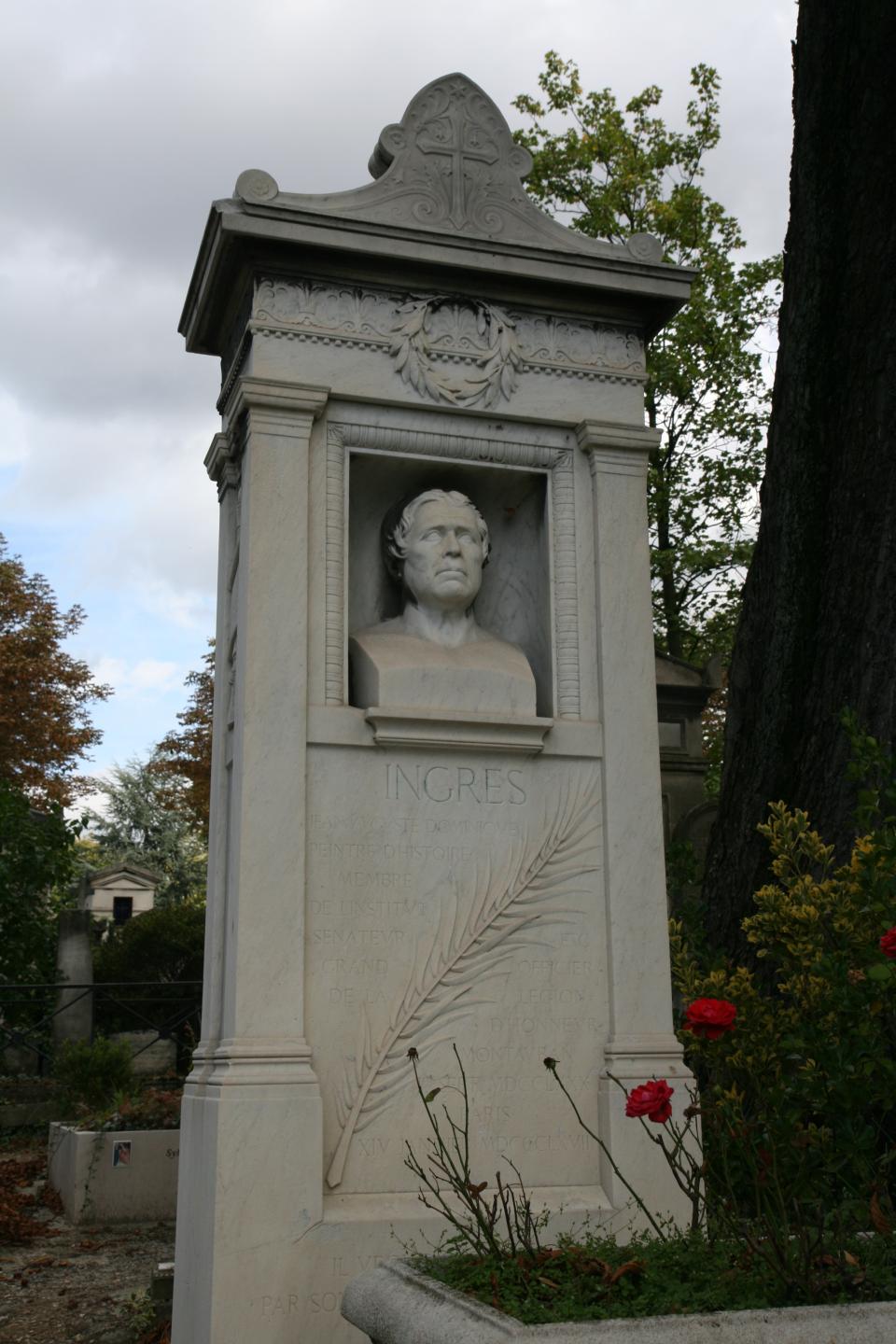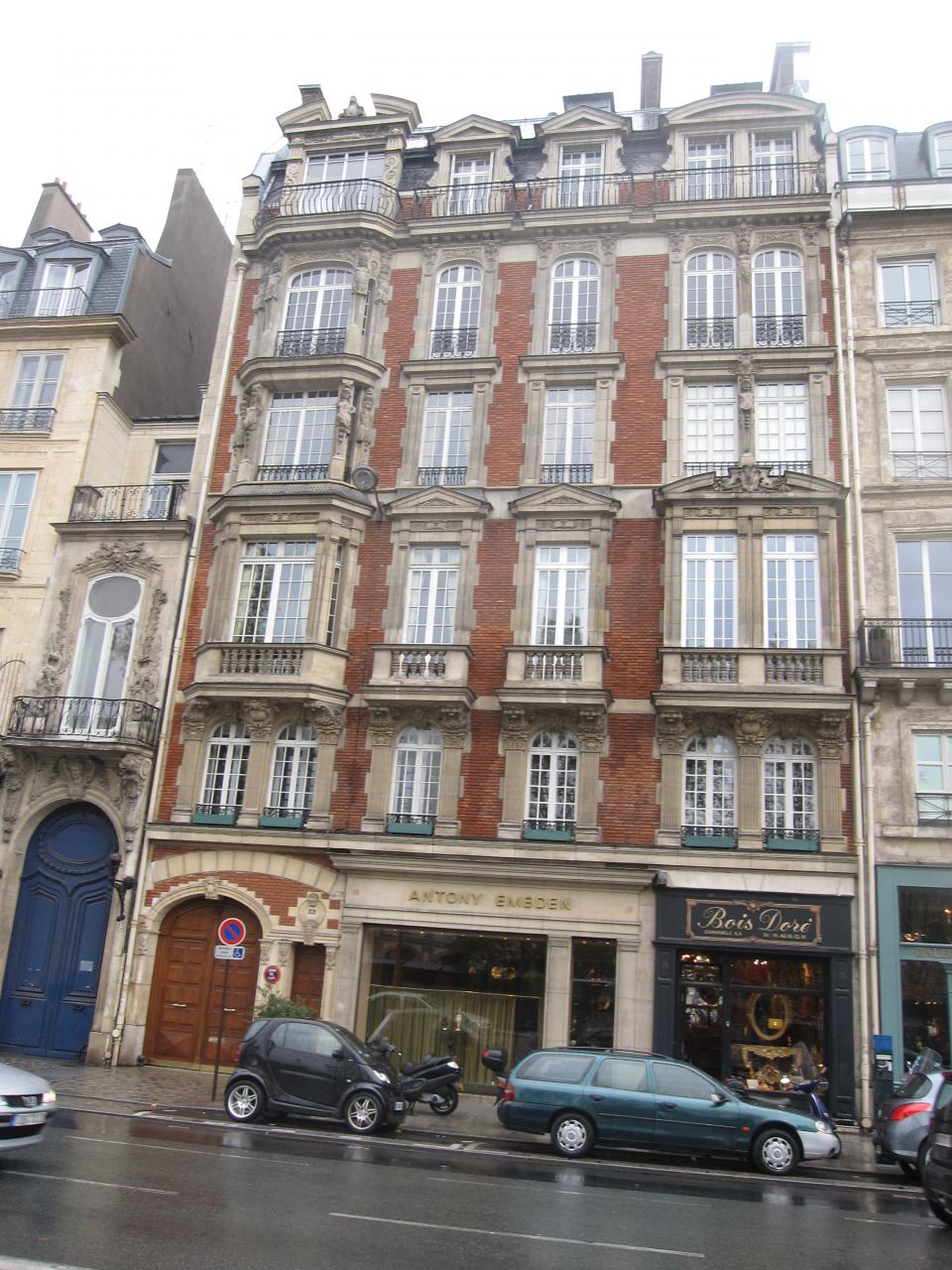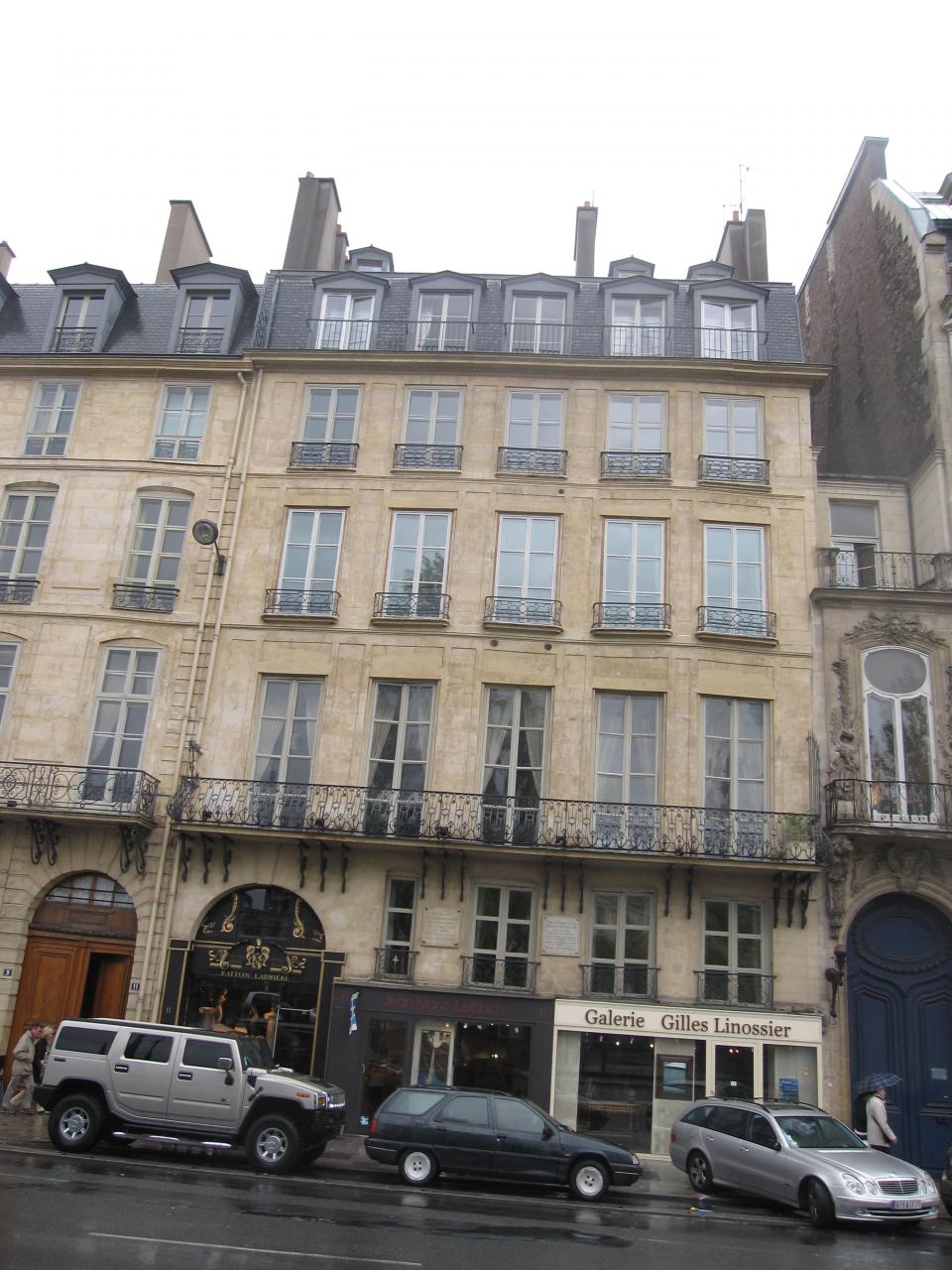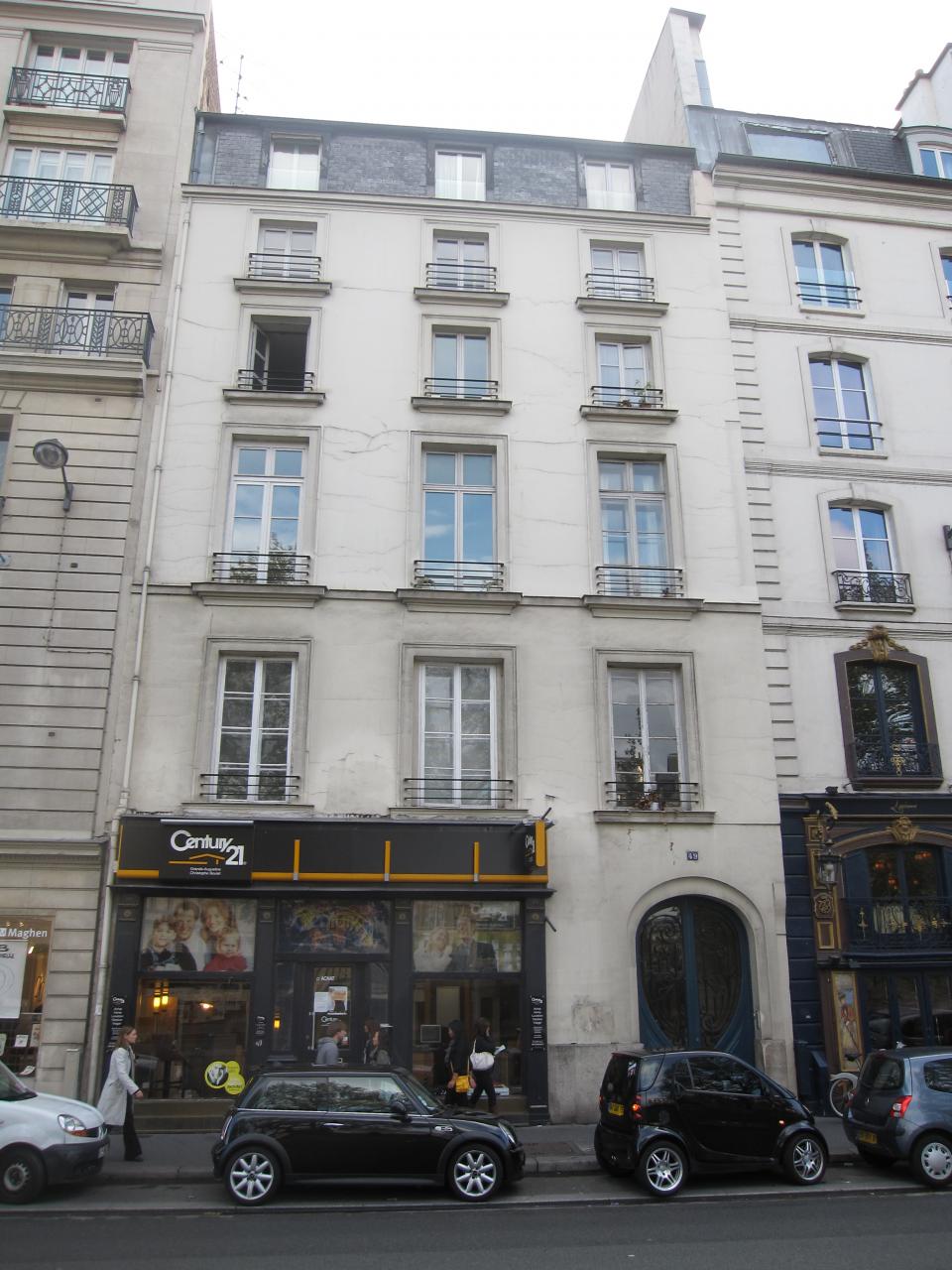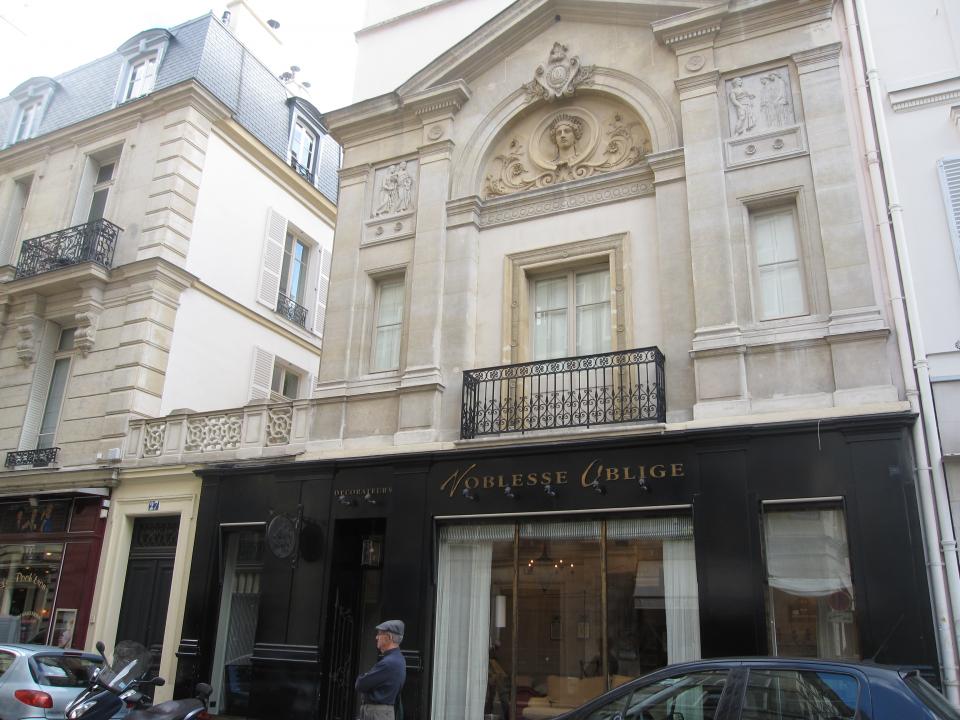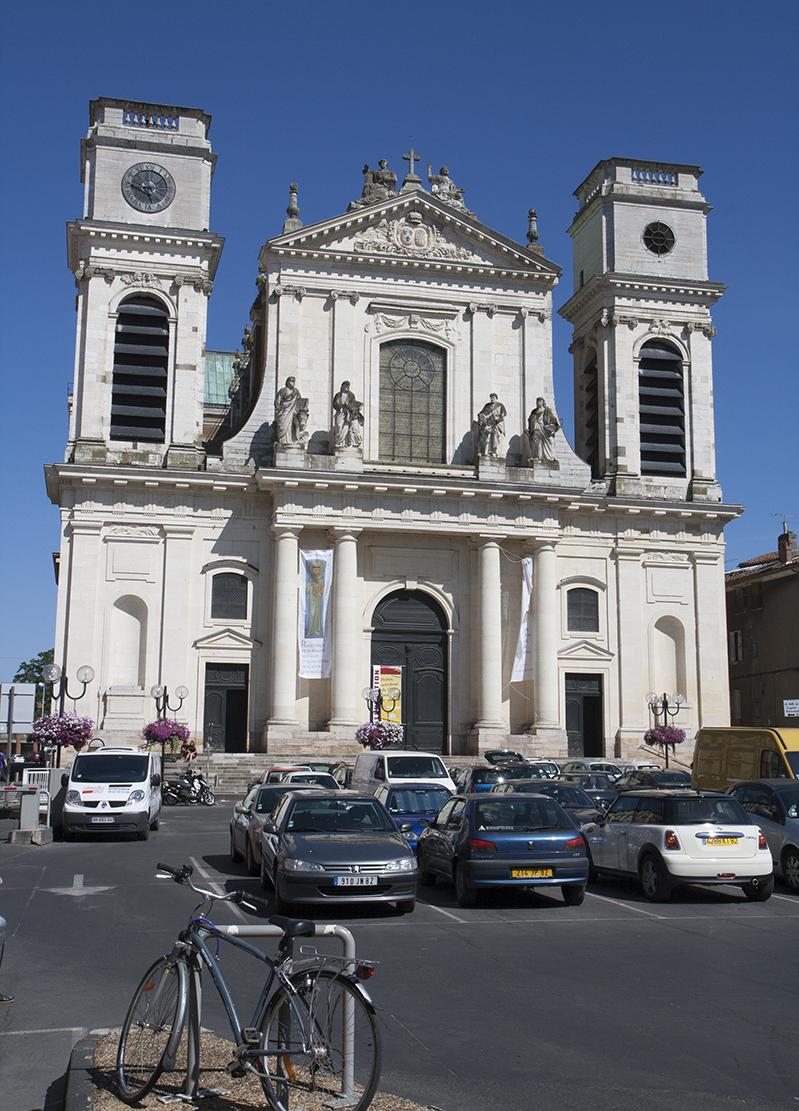Works by this Artist
Ambassadors of Agamemnon in the Tent of AchillesJean-Auguste-Dominique Ingres, 1800 Vow of Louis XIII
Jean-Auguste-Dominique Ingres, 1824 Grande Odalisque
Jean-Auguste-Dominique Ingres, 1814
Background
son of sculptor Jean-Marie-Joseph Ingres
Studies
with father; Académie Royale in Toulouse (1791-97); with Jacques-Louis David (1797); École des Beaux-Arts (1799-1801); French Academy in Rome (1806-10)
Career
1801 – wins Prix de Rome with The Ambassadors of Agamemnon in the in the Tent of Achilles
1824 – awarded Cross of the Legion of Honor by Charles X; elected member of Academie des Beaux-Arts with Vow of Louis XIII
1838-1841 – director of French Academy in Rome
1855 – retrospective exhibition at 1855 Paris Exposition universelle
1862 – appointed to the Senate
Ingres was an accomplished violinist.
Travels
Rome (1806-20 and 1838-41), Florence (1820-24), Paris (1824-37 and 1841-67)
Commissions from
Napoleon Bonaparte, Caroline Murat (Queen of Naples, sister of Napoleon Bonaparte), Charles X (King of France), Napoleon III (Emperor of France)
Important Artworks
Self-Portrait at Age 24, 1804 (Musée Condé, Chantilly)
Mademoiselle Rivière, 1805 (Louvre, Paris)
Napoleon on the Imperial Throne, 1806 (Musée de l’Armée, Paris)
François-Maurius Granet, 1807 (Musée Granet, Aix-en-Provence)
Oedipus and the Sphinx, 1808 (Louvre, Paris)
Louis-François Bertin, 1832 (Louvre, Paris)
Joan of Arc at the Coronation of Charles VII at Reims Cathedral, 1854 (Louvre, Paris)
Madame Paul-Sigisbert Moitessier, 1856 (National Gallery, London)
The Turkish Bath, 1862 (Louvre, Paris)
Documentation
Baudelaire considered Ingres an artist whose values were outdated:
“…M. Ingres may be considered as a man endowed with lofty qualities, an eloquent amateur of beauty, but quite devoid of that energy of temperament which constitutes the fatality of genius. His dominant preoccupations are his taste for the antique and his respect for the School. His admiration, on the whole, is fairly easily bestowed, and his character is somewhat eclectic, like all men who are lacking in fatality. And so we see him wandering from archaism to archaism; Titian (The Sistine Chapel), the Renaissance enamellers (Venus Anadyomene), Poussin and the Carracci (Venus and Antiope), Raphael (St. Symphorian), the German primitives (all those little things in an anecdotal, picture-book style), antique bric-a-brac and the checkered coloring of Persian and Chinese art (the small Odalisque), are forever disputing for his preference. The love and influence of antiquity make themselves felt throughout his work; but it often seems to me that M. Ingres is to antiquity what the transitory caprices of good taste are to the natural good manners which spring from the dignity and charity of the individual.”
From Charles Baudelaire, “The Exposition,” Art in Paris 1845-1862. Salons and Other Exhibitions, Jonathan Mayne, trans. and ed. (Oxford: Phaidon, 1965), 133-4.
In an 1849 report to the Permanent Commission on the Fine Arts (Commission Permanente des Beaux-Arts), Ingres expressed concern about the state of painting in France :
“To remedy the flow of mediocrity which has caused the disintegration of the French School, to counteract the banality which has become a public misfortune, which sickens taste and overwhelms the state administration of the arts, fruitlessly wasting its resources, it is necessary to renounce exhibitions. There should be a courageous declaration that only monumental painting will henceforth be encouraged. It should be decreed that we decorate our public buildings and churches whose walls cry out for paintings. These decorations should be entrusted to artists of superior ability who would employ mediocre artists as their assistants. The latter would thus cease to oppress art and become useful. Young artists would be proud to help their masters. Everyone who can hold a brush could be used.”
Cited in Lorenz Eitner, Neoclassicism and Romanticism 1750-1850, vol. 2: Neoclassicism and Romanticism (Englewood Cliffs: Prentice Hall, 1970), 138.
In his 1855 review of the Exposition universelle, art critic Theophile Gautier declared Ingres’s leading position in French art and position in art history:
“The first name which comes to mind as we turn to the French school is that of Monsieur Ingres. All Salon reviews, whatever the critic’s opinion, invariably begins with him. It is impossible, in fact, not to place him on art’s summit, on that throne of gold with ivory steps on which are seated, crowned with laurel, the artists who have accomplished their glory and are ready for immortality. The epithet of ‘sovereign’ which Dante gives to Homer fits Ingres equally well. It has been bestowed on him by the young generation whose life span overlaps his radiant old age….He alone represents in our time the high traditions of history painting, of the ideal, and of style. He has, for this reason, been accused of lacking modern inspiration and of ignoring the world around him, in short, of not belonging to his time. The accusation is perfectly just: Ingres is not, in fact, of his time – he is eternal.”
Cited in Lorenz Eitner, Neoclassicism and Romanticism 1750-1850, vol. 2: Neoclassicism and Romanticism (Englewood Cliffs: Prentice Hall, 1970), 139-40.
Web resources
smarthistory: Ingres, Grand Odalisque
Readings
Betzer, Sarah. Ingres and the Studio: Women, Painting, History. University Park, PA: Pennsylvania State University Press, 2012
Grigsby, Darcy Grimaldo. “A Woman’s Pleasure: Ingres’s Grande Odalisque,” in Norma Broude and Mary D. Garrard, eds. Reclaiming Female Agency: Feminist Art History after Postmodernism. Berkeley, CA: University of California Press, 2005, pp. 159-85
Leeks, Wendy. “Ingres Other-Wise,” in Janis Tomlinson, ed., Readings in Nineteenth-Century Art. Upper Saddle River, NJ: Prentice Hall, 1996. 52-71
Ockman, Carol. “Profiling Homoeroticism: Ingres’s Achilles Receiving the Ambassadors of Agamemnon,” The Art Bulletin, vol. 75, no. 2 (June 1993): 259-74
Ockman, Carol. Ingres’s Eroticized Bodies: Retracing the Serpentine Line. New Haven, CT: Yale University Press, 1995
Rifkin, Adrian. Ingres Then, and Now. London and New York: Routledge, 2000
Salmon, Dimitri. Ingres: la Grande Odalisque. Exhibition catalogue. Paris : Réunion des Musées nationaux, 2006 (in French)
Siegfried, Susan L. Ingres: Painting Reimagined. New Haven, CT: Yale University Press, 2009
Images
In 1849, Ingres returned to Paris from Rome and rented a studio at 15 quai Voltaire (6th arrondissement) .
Ingres lived at 11 Quai Voltaire, Paris (6th arrondissement) between 1857 and 1869. The front windows overlook the Louvre.
